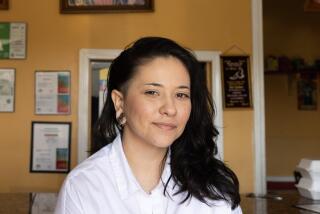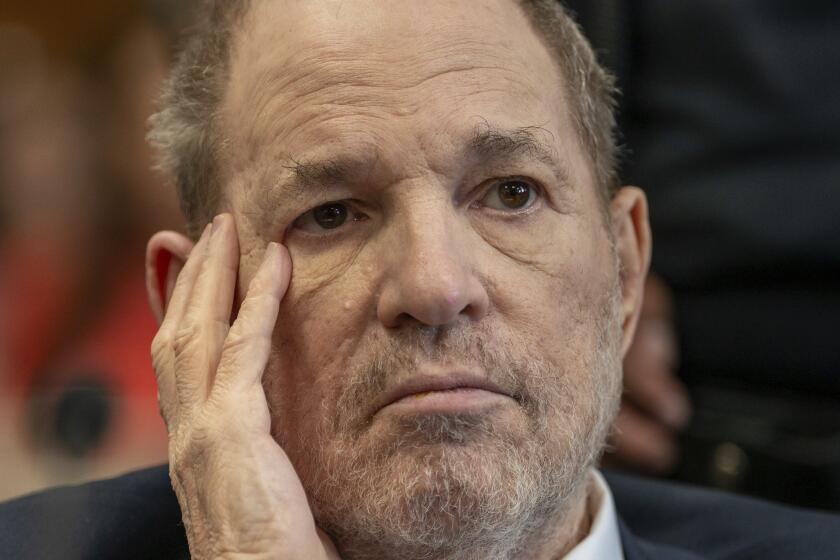Pope Francis’ teachings help inspire ‘renaissance’ among young clergy
One of the most striking sights at the World Meeting of Families here is the number of young priests and nuns, many wearing traditional habits.
“The most frequent question I get is, ‘How old are you?’” said Father Philip Smith, 31, of Toledo, Ohio.
------------
FOR THE RECORD
An earlier version of this article said that Sister Susan Francis Graham was a member the Missionaries of the Sacred Heart of Jesus. The name of the order is the Apostles of the Sacred Heart of Jesus.
------------
Nationwide, of the more than 3,000 men in training to become priests this year, the percentage who are 34 or younger has risen to more than 75% since 2000, according to the Center for Applied Research in the Apostolate, or CARA, at Georgetown University, with the greatest increase among those 25 to 29.
That’s a startling surge among millennials — those born after 1980 — especially given that the number of millennials who identify as Catholic has fallen from 22% in 2007 to 16% last year, according to the Pew Research Center.
“Young adults today are looking to give their life to something. Priesthood is one way to do that,” said Smith, who works with students at the University of Toledo, including three fellow students who joined the seminary this year.
“There is a renaissance among some of the religious orders,” he added.
The trend is driven, in part, by how millennials see the world and their place in it. Sister Clare Matthiass, 41, of Our Lady Queen of Angels Convent in East Harlem, N.Y., said many millennials look for a way of life that is deeply meaningful, if unorthodox. Simple examples: vegans or those who refuse to wear brand-name clothing.
A religious vocation — with its vow of poverty, among other things — fills that need. Matthiass said young people “are looking for something radical like poverty. There’s a real countercultural dimension to our lives.”
Matthiass spent the last year working on a documentary about fellow sisters in the U.S., “For Love Alone.” At screenings in Hollywood, San Francisco and across the country, she said viewers are surprised to see hundreds of young sisters.
“People are like, ‘Is this for real?’ It’s hidden, but it’s alive and well,” Matthiass said. “Traditional religious communities are growing.”
Even so, religious vocations have plummeted in the United States overall. According to CARA, there were 58,632 priests in 1965. Last year, there were 38,275. The number of nuns also fell during that time, from 179,954 to 49,883.
During his visit to Philadelphia this weekend, Pope Francis will is expected to spend Saturday morning at nearby St. Charles Borromeo Seminary, where he will be greeted on the front steps by seminarians, who plan to serenade him just as their predecessors did Pope John Paul II during his visit in 1979.
A lot has changed since then.
Now, Smith said, college students considering the priesthood often ask about the sacrifices involved. He points to the pope’s teachings: “Money, control, popularity, success are not everything. Simplicity of life is sometimes the happier life. If you have that attitude, priesthood makes sense.”
And the priesthood has evolved.
“People are surprised that they can see the humanity in a priest, that he has family, hobbies, likes to play sports and watch sports on TV,” Smith said.
But the priesthood is still often seen as a “strange choice” by family and friends, he said.
“We live in a sex-saturated culture, so for someone to say they want to give that up is seen as strange,” Smith said. “I have some friends whose families were not supportive, because of the clergy sex scandal and the loss of respect for priests.”
It can be even more “countercultural” for women to join religious orders, Smith said.
Sister Mary Joseph Evans, 32, of New Ulm, Minn., posed for photos with children and families this week at the Philadelphia gathering.
She said when she speaks at youth retreats, some are shocked to discover that she’s youthful and modern, even though she wears a traditional habit.
“We’ll play ultimate Frisbee with them, and they’re shocked,” she said. “I say ‘Yeah, I play ultimate Frisbee — and I’m gonna play hard!’”
Sister Susan Francis Graham, 30, of Dallas, quit college to start the process, leaving behind pharmacy studies and a boyfriend to care for elderly sisters at a nursing home in central Connecticut. Her choices surprised family and friends.
Although she was raised Catholic, she actually didn’t know any nuns.
“It wasn’t meeting sisters that changed my mind,” she said. “It was meeting priests” — particularly Jesuits, well-educated clergy called to serve the poor. Francis himself is a Jesuit.
Graham said she researched religious orders online and contacted them before deciding which to pursue. She had volunteered with Pharmacists Without Borders in France and was interested in international service. So she chose the Apostles of the Sacred Heart of Jesus, an order that works all over the world.
She took a vow of poverty last year after eight years of training. Graham lives communally and wears a traditional black-and-white habit.
“It really is a huge responsibility, because you’re always representing the community. We wear this when we go shopping, when we’re weeding the garden or having a bad day,” she said.
One day at the grocery store, she complained to the cashier about the cold weather.
The clerk admonished her.
“She said, ‘Aren’t you supposed to always know the joy of the Lord in your heart?’” Graham said.
The habit, the nun said with a smile, “always calls me to accountability.”
molly.hennessy-fiske@latimes.com
Twitter: @mollyhf
More to Read
Start your day right
Sign up for Essential California for news, features and recommendations from the L.A. Times and beyond in your inbox six days a week.
You may occasionally receive promotional content from the Los Angeles Times.







